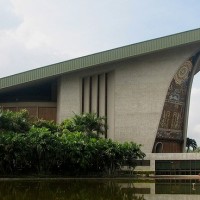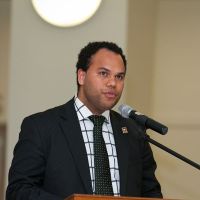PNG’s Election Petitions: The Stats Don’t Lie
As Peter O’Neill’s new coalition government begins the arduous task of establishing itself in the post-election environment of Papua New Guinea, the sorting through of Election Petitions – the concluding phase of the election process – has begun.
According to the Organic Law on National and Local Level Government Elections, petitioners have 40 days after a declaration of a result to lodge an Election Petition. That deadline passed late last week, poignantly right before the country’s 37th Independence celebrations.
An Election Petition refers to the procedure for challenging the result of a Parliamentary or local government election, and is governed by the National Court Election Petition Rules for Presentation and Conduct of Election Petitions 2002 (Amended).
At last count, 136 Election Petitions had been lodged with the first being filed on 14 May regarding the Southern Highlands Regional seat, and the last filed on 17 September concentrating on the NCD Regional seat – a reflection of the drawn out process PNG Election 2012 demanded.
The 136 Election Petitions represent 79 electorates (out of a total of 111) – a contesting rate of 71%. Enga registered the most Election Petitions with 22, followed by Southern Highlands with 14, Eastern Highlands with 10 and NCD with 11.
Bougainville was the only province where no Election Petitions were filed.
In terms of electorates, Enga’s Kompiam-Ambum registered the most Election Petitions with 8, followed by SHP’s Kagua-Erave with 4, then eight others on 3 apiece.
Regionally, the Highlands Region lodged 72 Election Petitions; Southern 29; Momase 24; and New Guinea Islands lodged 11.
A closer look at who exactly is lodging the petitions, and whom the petitions are being lodged against, provides some interesting analysis:
Of the 136 Election Petitions, 18 of them were filed by sitting MPs who lost their seats.
Most notably among these is former PANGU Pati Leader and Nuku MP Andrew Kumbakor; former People’s First Party Leader and Governor of Morobe, Luther Wenge; former PNG Labour Party Leader and Governor of Western, Dr Bob Danaya; former Deputy Prime Minister and Wabag MP Sam Abal; and former PNG Party Deputy Leader and South Waghi-Angalimp MP Jamie Maxtone-Graham.
There are also some notable non-MP losers who have lodged petitions.
Sir John Kaputin has lodged one against Deputy Prime Minister Leo Dion for ENB Regional; Sir Barry Holloway has filed another against EHP Governor Julie Soso (the only petition against any of PNG’s 3 woman MPs); while former Police Commissioner Gari Baki and Commander of the Defense Force Jerry Singirok have filed petitions against Talasea MP Francis Marus and Sumkar MP Ken Fairweather respectively.
Furthermore, 20 of Peter O’Neill’s 33-member Cabinet will face an Election Petition – and the Prime Minister himself would have faced one too had it not been for the last minute decision of his losing adversaries to withdraw their petitions at the eleventh hour, with the pride of having a Southern Highlander as Prime Minister proving the mitigating factor.
Mt Hagen MP and Minister for Petroleum & Energy William Duma; Kandep MP and Minister for Treasury Don Polye; Alotau MP and Minister for National Planning Charles Abel; and Kompiam-Ambum MP and Minister for Environment & Conversation John Pundari, are all facing 2 Election Petitions each.
Also, new Speaker of Parliament Theo Zurenuoc will face an Election Petition – and so too veterans New Ireland Governor Sir Julius Chan and Enga Governor Peter Ipatas.
Of the 135 female candidates who contested PNG Election, only one has lodged an Election Petition – with Philomena Kassman filing one against first-term Central Regional Governor Kila Haoda.
Losing candidates Jimmy Maladina (Alotau Open), Luke Manase (Kandep Open), Sandy Talita (Enga Regional), and losing MP Peter Waranaka (Yangoru-Saussia Open) have filed the most petitions – with 2 apiece.
Based on the sheer number of Election Petitions filed, and the people who these petitions relate to and may affect, their outcomes will be important to the stability of Peter O’Neill’s Coalition.
Election Petitions have have four possible outcomes:
- The election is declared void: the result is quashed and a writ is issued for a new election
- The election is held to have been undue: the original return is quashed, and another candidate is declared to have been elected.
- The election is upheld, and the member returned is found to have been duly elected.
- The petition is withdrawn. this may occur when the petitioner fails to attend a hearing, or when Parliament is dissolved before the petition process is complete
It is quite likely that over the next months we will see a number of casualties from the Election Petition process – and I think up to three Ministers will most certainly lose their jobs temporarily while writs are issued for new elections in their respective electorates to take place.
This is a tentative period for both the Government and Opposition – but the stakes are much higher for Peter O’Neill than Belden Namah, particularly as there is surfacing evidence that a number of his newly appointed Ministers have been privy to electoral fraud destabilizing the democratic process in their election to parlaiment.
To understand the Election Petition process better, you can download the National Court Election Petitions Process Guidebook 2012.















Very informative piece as always. I see your quote about costs of legal representation. Obviously petitioners must pay their own costs but what about cost of defences for sitting MPs? Can you generalise and say who usually pays for this? The Government, their party or the MP personally? And would that be different for MPs who are currently Ministers?
‘Tommy Pukpuk’ – Thank you. A very good question – and one that I must admit I do not know the answer to. Can anybody help us out here? Rgds, Tavurvur.
Thank you The Garamut for this very informative piece.
‘TolaiMan’ – Your welcome. Rgds, Tavurvur.